Radial Line Pattern Development
20 Right Cone
- Draw an elevation view.

- Profile the base of the elevation view and divide it into six equal parts (see Divide a Circle Into 12 Equal Parts).
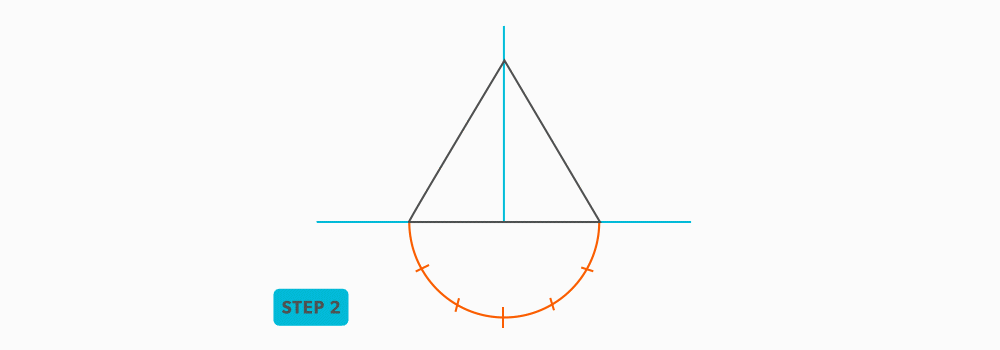
- Label the profile from 1 to 7 and project the divisions vertically into the base of the cone.
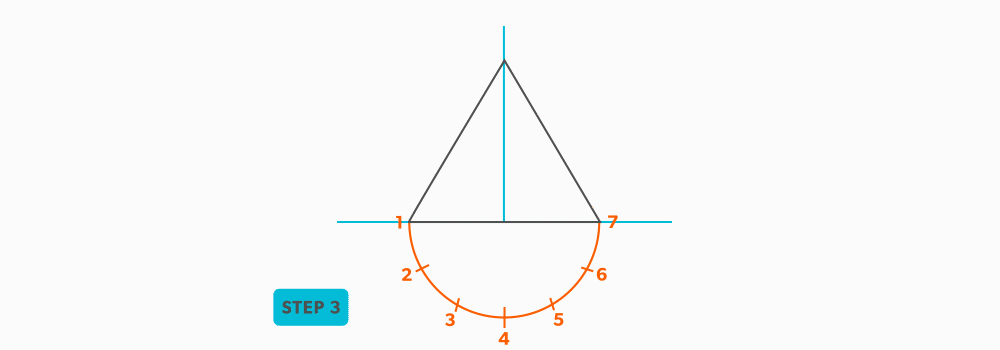
- Project the element lines from the base to the apex of the cone.

- Locate a radius point where you want to develop the pattern. Unlike Parallel line, it doesn’t matter where this is. There is no projection into the pattern like we used before. But keep in mind that you may require enough room to fit a diameter equal to two slant heights.

- With your compass, take the slant height from the elevation view and swing an arc (stretch-out arc). Because we don’t know how long the arc needs to be yet, we use best judgement. We do know that it will be equal to the base circumference. The shallower the cone is, the larger the stretch-out angle will be. A very steep cone will be a much smaller angle

- Establish a starting point for the pattern and draw a line back to the radius point. The starting point can be anywhere along the arc
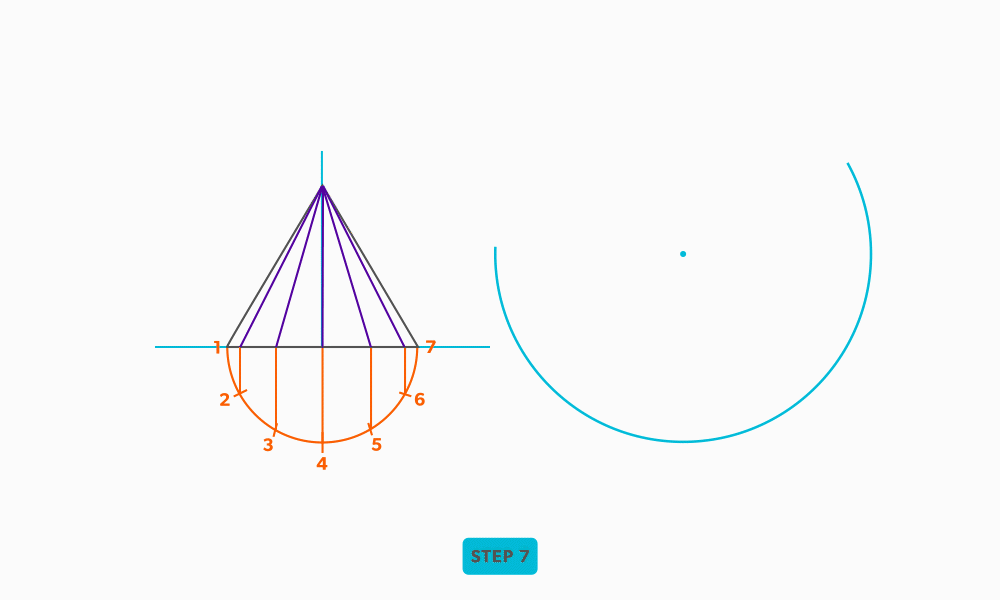
- Set your compass to a step-off. From your starting point, swing it 12 times along the stretch-out arc.
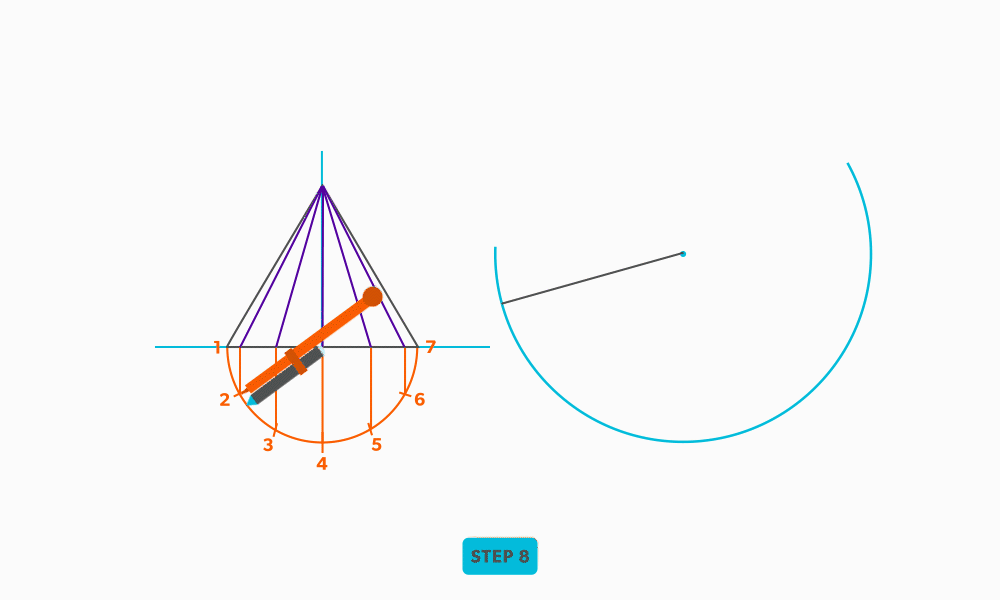
- Connect the last point back to the radius point to complete the pattern.
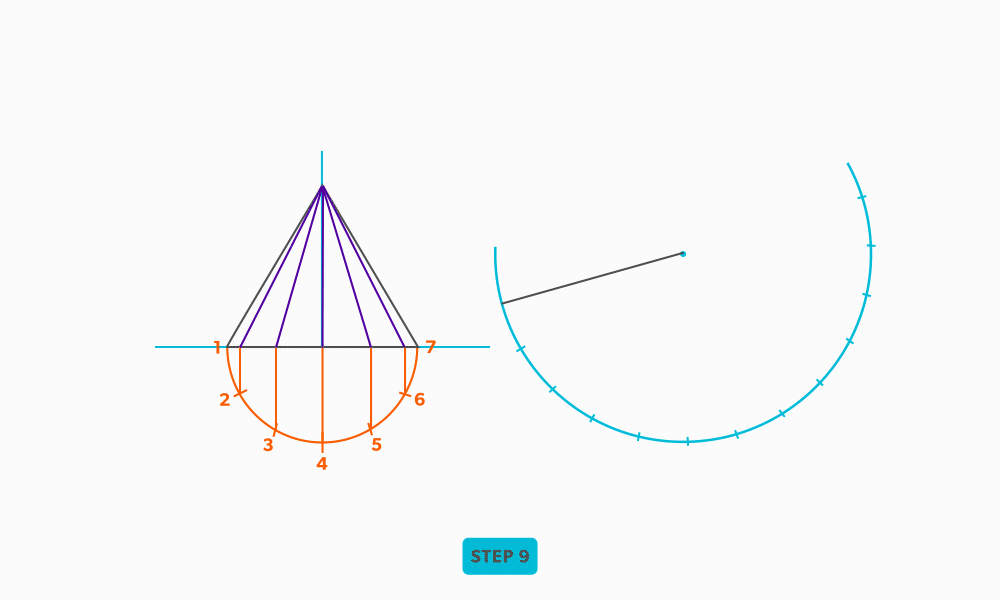
definition
looking at the front or side of something, to have elevation (height), 2D
a half of a plan view, drawn on the outside of an object
a line representing an edge or bend
the intersection point of a cone, as seen in the elevation view
the hypotenuse of a cone, outside edge. The slant height is always a true length in the elevation view
the angle or arc which encompasses a radial line pattern

